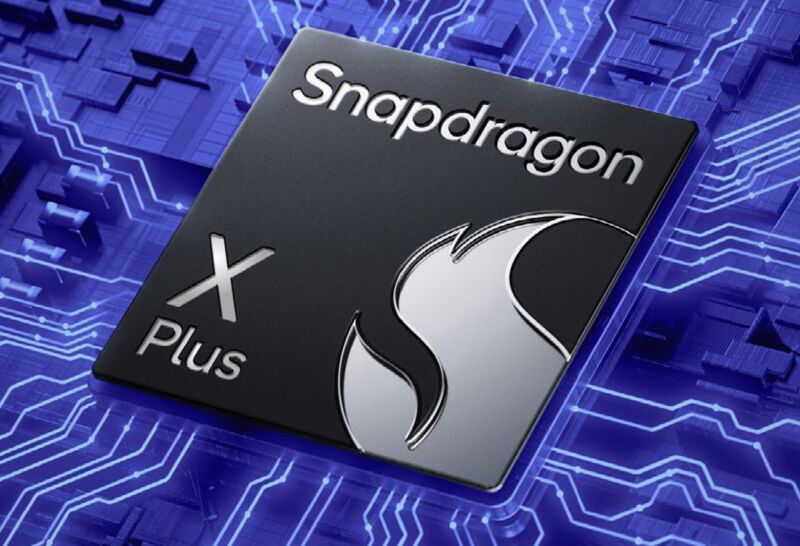
Qualcomm’s Snapdragon X series of chips promises to be the company’s first that can go toe-to-toe with Apple Silicon, and the PC ecosystem is reacting accordingly. Microsoft reportedly plans for the Arm version of its next Surface tablet to be the flagship, and major apps like Chrome and Dropbox have recently released Arm-native Windows versions for the first time.
Ahead of the chips' launch late this year, Qualcomm announced a new lower-end model destined for cheaper devices. Dubbed the Snapdragon X Plus, it shares a lot in common with the flagship Snapdragon X Elite.
The Snapdragon X Plus includes 10 CPU cores instead of the Elite’s 12, though the more noticeable change is its lack of support for clock-speed boosting; the chip’s 3.4 GHz base frequency is as fast as it goes, where the Elite chips can boost two cores to 4.2 GHz and one core up to 4.3 GHz, depending on the specific model. Qualcomm also rates the X Plus’ integrated GPU at 3.8 TFLOPs, down from the X Elite’s maximum of 4.6 TFLOPs. Aside from those high-level FLOP numbers, we still know very little about how the GPU will be configured; we also don’t know the ratio of “big” and “little” CPU cores.
AdvertisementQualcomm says the Snapdragon X Plus’ multi-threaded performance still compares favorably to Apple’s M3, outrunning it by about 10 percent; Qualcomm doesn’t provide any single-core scores, which are presumably less flattering. The company also says it outruns Intel’s Core Ultra 7 155H and AMD's Ryzen 9 7940HS chips in multi-core performance when the chips are using the same power, or it can match those x86 chips' performance while using 65 percent less power.
All Snapdragon X chips share the same basic Oryon CPU architecture, developed by the former Apple Silicon engineers that Qualcomm acquired when it bought a company called Nuvia in 2021. The Elite and Plus chips also use the same 4nm manufacturing process and the exact same neural processing unit (NPU). This ensures that both chips will meet Microsoft’s rumored requirements for “AI PCs,” a list of specs that also includes 16GB of RAM and (for some reason) the dedicated Copilot key. The X Elite and X Plus chips all support up to 64GB of LPDDR5X memory.
It’s not clear what “AI PCs” will be able to do that regular non-AI PCs can’t, but it’s likely that they’ll be able to run some version of the Copilot generative AI assistant locally on-device. Testers have also found an AI-focused revamp of Windows Explorer in recent testing builds. Microsoft recently released Phi-3-mini, a smaller language model that claims to be able to match GPT 3.5’s performance using 3.8 billion parameters instead of 175 billion. This would be well-suited to on-device processing—fewer parameters means lower system requirements, faster performance, and a smaller footprint on disk.
















